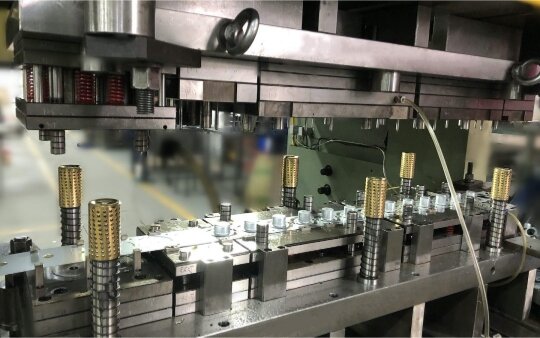La façon dont les pièces métalliques sont assemblées est cruciale dans la fabrication de tôles. Sans les bons joints, même les meilleurs matériaux et les meilleures conceptions peuvent se désagréger sous la contrainte. Qu'il s'agisse de travailler sur un prototype ou de préparer une production en série, le choix de la bonne technique d'assemblage fait une grande différence. Voyons comment choisir le bon joint pour votre projet afin d'obtenir des résultats solides et durables.
Les joints de tôle jouent un rôle essentiel dans la solidité et la durabilité des produits métalliques. Ils constituent la base de toute structure métallique, qu'il s'agisse d'une enceinte, d'une armoire ou d'un châssis. En comprenant les différents types de joints et en sachant quand les utiliser, vous pouvez créer des conceptions plus efficaces et plus rentables.
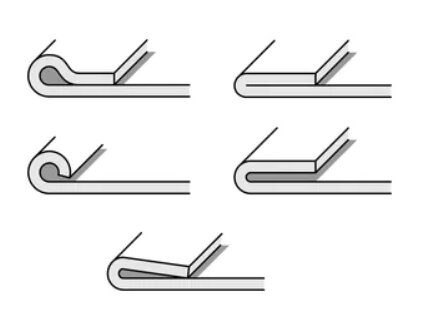
Qu'est-ce qu'un joint de tôle ?
Les joints de tôle sont des liaisons entre deux ou plusieurs pièces de tôle. Pour s'assurer que les pièces métalliques sont solidement fixées, ces assemblages sont réalisés à l'aide de différentes techniques, telles que le soudage, le rivetage ou le boulonnage. La méthode choisie dépend du matériau, des exigences de conception et de la résistance souhaitée de l'assemblage.
Les joints de tôle jouent un rôle crucial dans la fabrication. Ils ont un impact direct sur la résistance et la durabilité du produit final. Si un joint est mal réalisé, il peut affaiblir l'ensemble de la structure. Cela peut entraîner une défaillance lorsque le produit est soumis à des contraintes. Un joint bien fait garantit que le produit peut supporter les forces auxquelles il est soumis pendant son utilisation.
Types courants de joints de tôle
Différents types de joints de tôle sont conçus pour répondre à des besoins de fabrication spécifiques. Voici les types les plus courants.
Articulations bout à bout
Les assemblages bout à bout se produisent lorsque deux pièces de métal sont placées bord à bord sans se chevaucher. Ces joints sont souvent soudés pour les renforcer. Il s'agit de l'un des joints les plus simples utilisés dans la fabrication des tôles.
Les joints bout à bout sont idéaux pour assembler des surfaces planes nécessitant une certaine solidité. Ils sont utilisés dans boîtiers métalliques, des conteneurs, et poutres structurelles. Les principaux avantages sont la simplicité, la facilité de fabrication et la forte soudabilité, ce qui les rend parfaits pour les connexions à haute résistance.
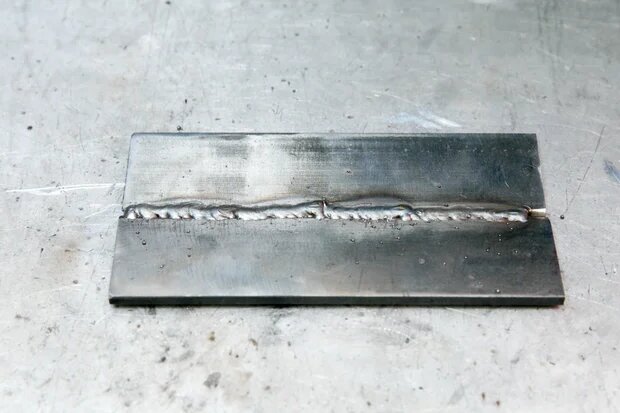
Joints d'angle
Les joints d'angle sont formés lorsque deux pièces métalliques se rencontrent à angle droit. Les joints d'angle ouverts présentent un espace entre les deux pièces, tandis que les joints d'angle fermés recouvrent ou relient complètement les deux pièces.
Les joints d'angle sont couramment utilisés dans cadres, panneauxIls créent des connexions angulaires solides qui aident à créer des formes telles que des boîtes et des enceintes. Ils créent des connexions solides et angulaires qui permettent de réaliser des formes telles que des boîtes et des boîtiers. Les avantages sont une rigidité et une résistance accrues et la possibilité de les souder ou de les riveter.
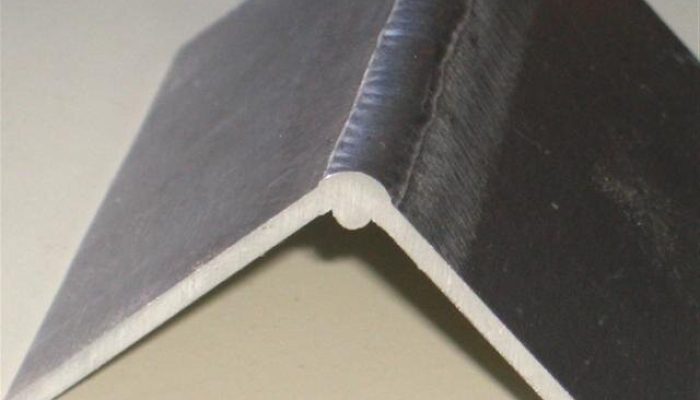
Joints de bord
Les joints de bord se produisent lorsque deux pièces métalliques sont assemblées le long de leurs bords. Ce type d'assemblage est simple mais nécessite un alignement précis pour être solide. La solidité du joint dépend de la façon dont il est assemblé, par exemple par soudage ou par rivetage.
Les joints de bord sont parfaits pour les panneaux de tôle ou toute application nécessitant une connexion nette et plate, comme dans les systèmes de chauffage, de ventilation et de climatisation, les toitures ou les armoires métalliques. Ils sont également utiles pour assembler des matériaux minces sans avoir besoin d'un renforcement important.
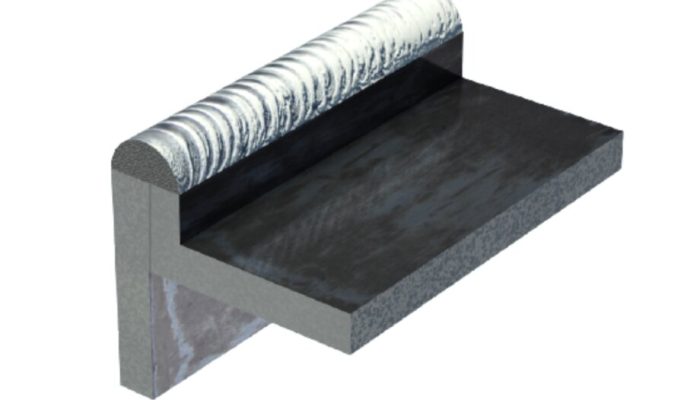
Joints en T
Les joints en T sont formés lorsqu'une pièce métallique est placée perpendiculairement à une autre, créant ainsi une forme de "T". Les variantes comprennent les soudures bout à bout ou les soudures d'angle, en fonction du besoin de solidité ou d'une simple connexion.
Les joints en té sont utilisés dans les secteurs de l'automobile, de l'aérospatiale et de l'ingénierie structurelle. Ils sont courants dans la construction de cadres, lorsqu'une pièce doit être fixée sur le côté d'une autre, comme dans les châssis de voiture ou les supports structurels.
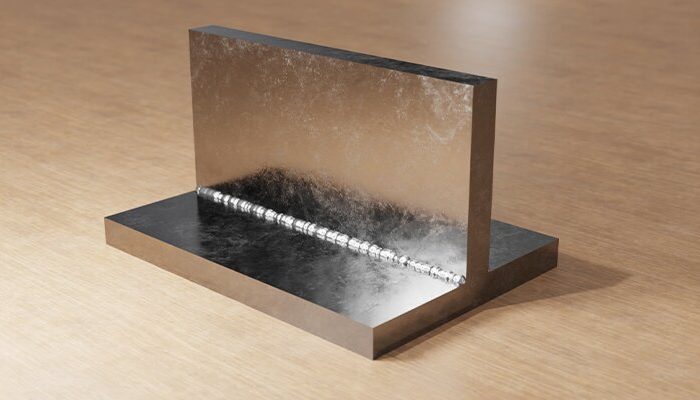
Joints à recouvrement
Les joints à recouvrement se produisent lorsqu'une pièce de métal recouvre le bord d'une autre. Ces bords sont soudés, rivetés ou boulonnés. Ils sont souvent utilisés pour assembler des métaux fins, où le chevauchement augmente la surface et la résistance.
Le principal avantage des joints à recouvrement est qu'ils permettent de réaliser des assemblages solides sans alignement précis des bords. Ils conviennent également à des matériaux d'épaisseurs différentes. Cependant, les joints à recouvrement peuvent être plus faibles que les joints d'angle ou d'about et peuvent nécessiter un renforcement supplémentaire.
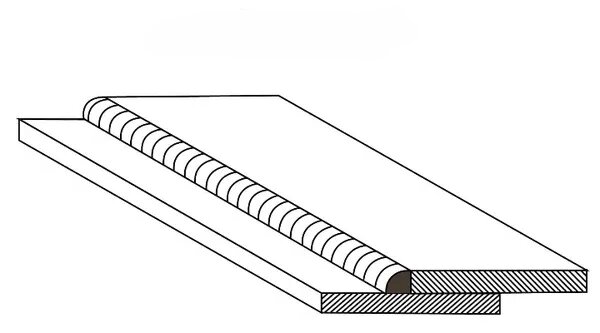
Méthodes d'assemblage de la tôle
Les différentes méthodes d'assemblage des tôles sont adaptées à différents projets et matériaux. Connaître les points forts et les utilisations de chaque méthode vous aidera à choisir celle qui convient le mieux à vos besoins.
Techniques de soudage pour les assemblages de tôle
Le soudage est l'un des moyens les plus courants d'assembler des tôles. Il utilise la chaleur pour faire fondre le matériau et fusionner deux ou plusieurs pièces. Voici trois méthodes de soudage courantes.
Soudage MIG
Soudage MIG est une méthode rapide et polyvalente. Elle utilise un pistolet de soudage pour alimenter un fil d'électrode, qui fond pour assembler les pièces de métal. Elle fonctionne bien avec les métaux fins ou d'épaisseur moyenne, créant des soudures solides et nettes.
Soudage TIG
Soudage TIG permet d'obtenir des soudures précises et de haute qualité. Elle convient mieux aux métaux plus minces. Cette méthode utilise une électrode de tungstène non consommable pour créer un bain de soudure rempli d'un matériau d'apport. Le soudage TIG est connu pour ses soudures propres, solides et de belle apparence.
Soudage à la baguette
Soudage à la baguetteLe soudage à l'arc sous protection métallique (SMAW) est une méthode plus traditionnelle. Elle utilise une électrode enrobée de flux pour faire fondre et fusionner les métaux. Cette méthode est rentable et polyvalente, mais en raison de la forte intensité de chaleur, elle est principalement utilisée pour les matériaux plus épais.
Rivetage et fixation mécanique
Rivetage et fixation mécanique utiliser des fixations physiques pour assembler des pièces métalliques. Ces méthodes sont souvent utilisées lorsque le soudage ne convient pas ou lorsque les pièces doivent être démontées.
Avantages du rivetage
Le rivetage est fiable, en particulier pour les matériaux fins ou difficiles à souder. Il ne nécessite pas de chaleur, ce qui réduit le risque de déformation. Les rivets facilitent également le démontage, ce qui est utile dans de nombreuses industries.
Applications courantes des rivets
Les rivets sont largement utilisés dans les secteurs de l'aérospatiale, de l'automobile et de la construction. On les trouve dans les structures des avions, les carrosseries des voitures et les tôles des bâtiments. Les rivets créent des connexions solides et permanentes qui résistent aux vibrations et aux contraintes environnementales.
Soudure et brasage
Les deux soudure et le brasage sont des méthodes qui consistent à faire fondre un matériau d'apport pour assembler deux pièces métalliques. Bien qu'elles soient similaires, les températures et les techniques utilisées diffèrent.
Différences entre le brasage tendre et le brasage fort
Le brasage utilise des températures plus basses (inférieures à 840°F ou 450°C) pour faire fondre le matériau d'apport et lier les pièces. Il est souvent utilisé pour l'électronique et les métaux fins. Le brasage utilise des températures plus élevées (supérieures à 840°F) et convient mieux aux matériaux plus épais ou aux joints qui nécessitent une plus grande résistance.
Quand choisir ces méthodes ?
Le brasage est excellent pour les composants délicats ou de précision, tels que l'électronique et la plomberie. Le brasage est utilisé lorsqu'une liaison plus forte est nécessaire, ce qui le rend idéal pour les applications dans les secteurs de l'automobile, du chauffage, de la ventilation et de la climatisation, et des machines lourdes.
Collage
Le collage utilise des adhésifs spécialisés pour assembler des pièces métalliques sans chaleur ni attaches mécaniques. Il fonctionne bien lorsqu'il s'agit d'assembler des matériaux différents, y compris des métaux dissemblables.
Types d'adhésifs utilisés dans les assemblages métalliques
Il existe de nombreux types d'adhésifs, notamment les époxydes, les acryliques et les adhésifs à base de polyuréthane. Les époxydes sont souvent utilisées pour leur solidité et leur résistance aux changements de température. Les acryliques durcissent rapidement et sont solides, ce qui en fait un autre bon choix.
Avantages du collage par adhésif
Le collage présente de nombreux avantages. Il permet une répartition uniforme des contraintes et une grande flexibilité. Il permet également d'assembler différents matériaux, ce qui peut s'avérer utile pour les composants sensibles à la chaleur. En outre, il peut réduire la nécessité d'utiliser des fixations mécaniques, ce qui permet d'économiser du poids et du temps d'assemblage.
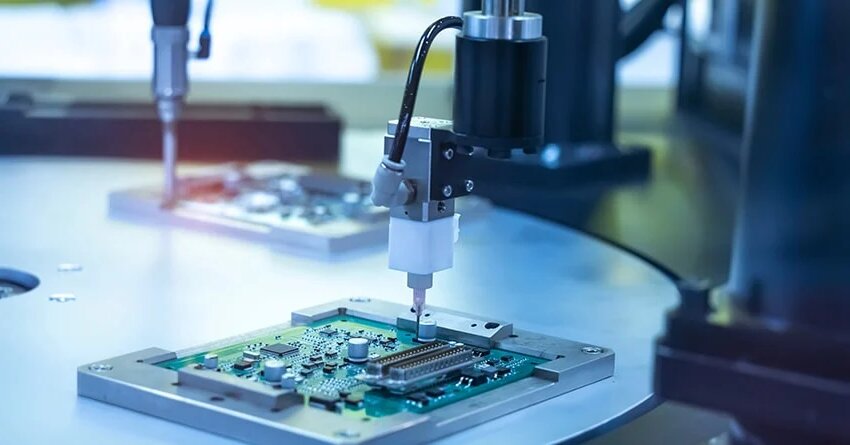
Facteurs influençant le choix du joint et des méthodes d'assemblage
Le choix d'une bonne articulation n'est pas seulement une question de résistance. Le matériau, la conception et l'environnement jouent également un rôle.
Considérations matérielles
Le matériau utilisé dans la fabrication de la tôle a un impact significatif sur le choix du joint et des méthodes d'assemblage.
Impact de l'épaisseur du matériau
L'épaisseur et la composition du matériau influent sur la facilité avec laquelle il peut être soudé, riveté ou collé. Les matériaux plus épais peuvent nécessiter des températures plus élevées et des méthodes plus énergivores, telles que le soudage MIG ou TIG.
Compatibilité des différents métaux
Lorsqu'il s'agit d'assembler différents métaux, il est essentiel de tenir compte de leur capacité à fonctionner ensemble. Les métaux comme l'aluminium et l'acier ont des taux de dilatation thermique et des points de fusion différents, ce qui rend le soudage ou le brasage plus difficile. L'utilisation de matériaux d'apport ou d'une méthode d'assemblage appropriés permet d'éviter des problèmes tels que la corrosion galvanique ou la faiblesse des liaisons.
Considérations sur la conception
La conception et l'ajustement des joints sont des facteurs essentiels pour garantir que le produit final répond aux exigences de résistance et de fonctionnalité.
Configuration et résistance des articulations
La conception du joint influe sur la charge qu'il peut supporter. Par exemple, les joints d'about sont solides mais nécessitent plus de préparation. Les joints d'angle ou en T permettent de réaliser des assemblages angulaires, mais peuvent nécessiter un renforcement supplémentaire pour supporter de lourdes charges.
Tolérances et ajustement
L'ajustement des pièces et les tolérances requises doivent être soigneusement étudiés. Si les pièces ne s'ajustent pas correctement, il peut en résulter un mauvais alignement, des soudures faibles ou des écarts qui réduisent la résistance de l'assemblage. Il est essentiel de garantir un alignement précis et des tolérances correctes pour créer des joints fiables et durables.
Conditions d'environnement et de service
L'environnement dans lequel le produit final sera utilisé joue un rôle important dans le choix du bon joint et de la bonne méthode d'assemblage.
Résistance à la température et à la corrosion
Lorsque des pièces de tôle sont exposées à des températures extrêmes ou à des environnements corrosifs, il est important de choisir des méthodes d'assemblage capables de résister à ces conditions. Certains métaux peuvent devenir cassants à basse température, tandis que d'autres peuvent se dégrader à haute température ou dans des environnements acides. Le procédé de soudage, les revêtements ou les adhésifs appropriés peuvent contribuer à maintenir la solidité de l'assemblage dans ces conditions.
Contraintes mécaniques et fatigue
Si le produit est exposé à de fortes contraintes mécaniques ou à des charges cycliques, telles que des vibrations ou des flexions, la méthode d'assemblage doit être capable de gérer ces facteurs. Les soudures, les rivets et les boulons peuvent tous être soumis à la fatigue au fil du temps. Comprendre les contraintes mécaniques auxquelles le produit sera soumis permet de choisir la méthode d'assemblage appropriée pour une durabilité à long terme.
Applications des joints de tôle
Les joints de tôle sont utilisés dans diverses industries, notamment l'aérospatiale, l'automobile et la construction. Voici comment ils s'appliquent dans le monde réel :
Aérospatiale
Dans l'industrie aérospatiale, la précision et la solidité des joints de tôle sont essentielles. Les pièces d'avion utilisent souvent des joints rivetés ou soudés pour garantir leur durabilité sous contrainte.
Automobile
Dans la construction automobile, les joints de tôle sont utilisés pour les composants structurels et les panneaux de carrosserie. Le choix des joints peut avoir une incidence sur le poids, les performances et la sécurité du véhicule.
Construction
Les joints de tôle sont utilisés dans les charpentes, les toitures et les systèmes de chauffage, de ventilation et de climatisation. En fonction de la conception et de l'application, des joints soudés ou boulonnés sont généralement utilisés pour une plus grande résistance et fiabilité.
Conclusion
Le choix du bon type de joint et de la bonne technique est essentiel pour obtenir un produit durable et rentable. Qu'il s'agisse de soudage, de rivetage ou de boulonnage, la méthode choisie peut avoir un impact sur le résultat final en termes de résistance, d'efficacité et de coûts de fabrication. Comprendre les différents types de joints et leurs applications vous aide à prendre les meilleures décisions pour votre projet.
N'hésitez pas à nous contacter si vous êtes à la recherche de services de fabrication de tôles fiables et de haute qualité. Contactez-nous dès aujourd'hui pour une consultation et une solution personnalisée adaptée à vos besoins.
Hey, je suis Kevin Lee

Au cours des dix dernières années, j'ai été immergé dans diverses formes de fabrication de tôles, partageant ici des idées intéressantes tirées de mes expériences dans divers ateliers.
Prendre contact

Kevin Lee
J'ai plus de dix ans d'expérience professionnelle dans la fabrication de tôles, avec une spécialisation dans la découpe au laser, le pliage, le soudage et les techniques de traitement de surface. En tant que directeur technique chez Shengen, je m'engage à résoudre des problèmes de fabrication complexes et à favoriser l'innovation et la qualité dans chaque projet.




